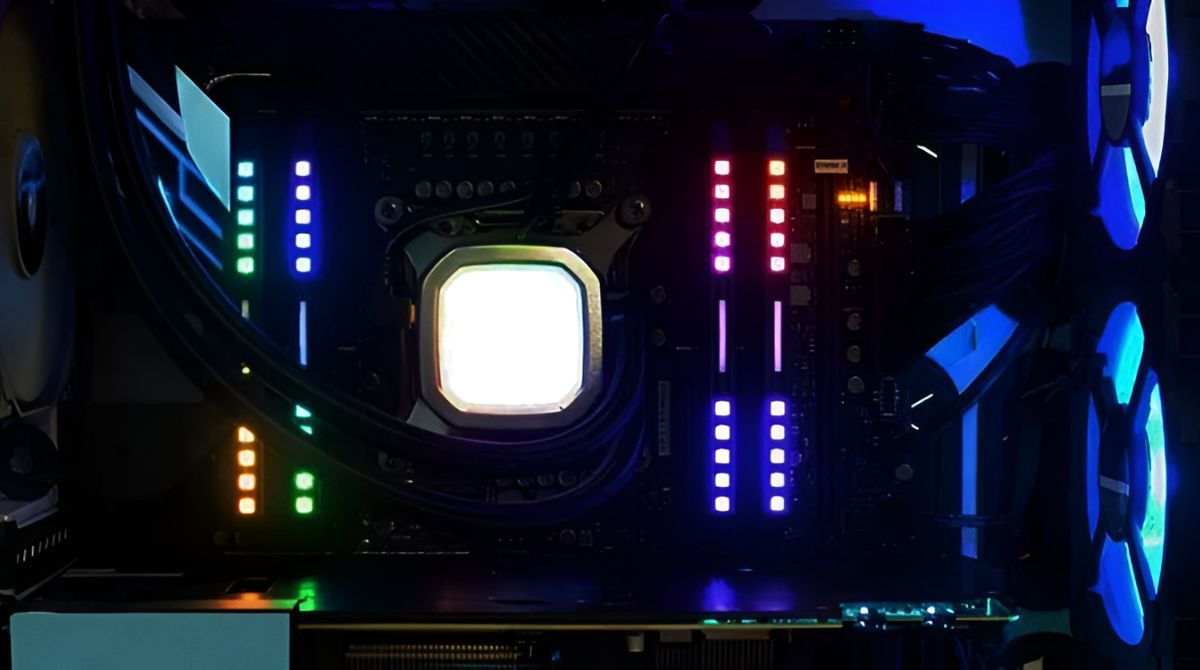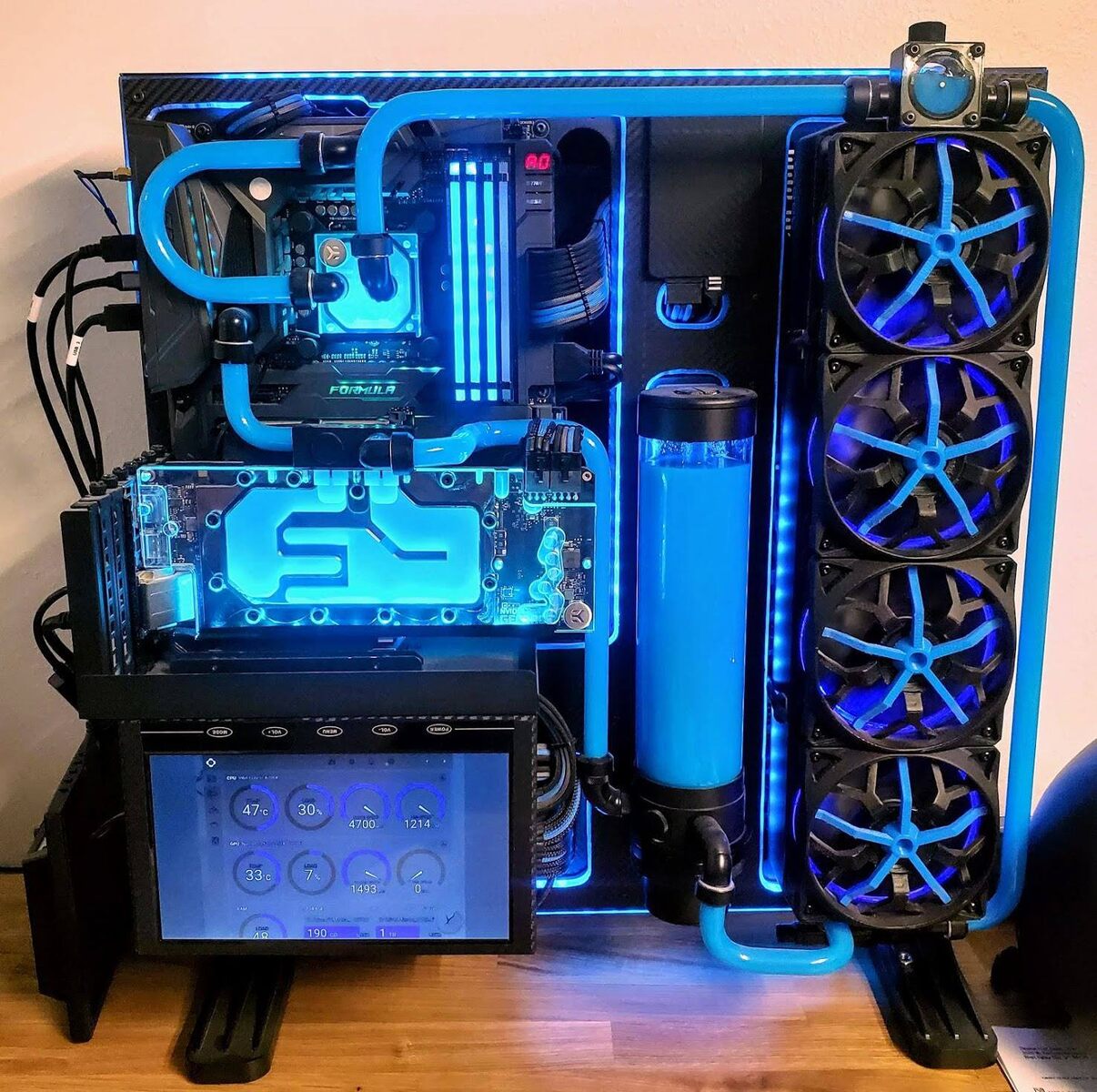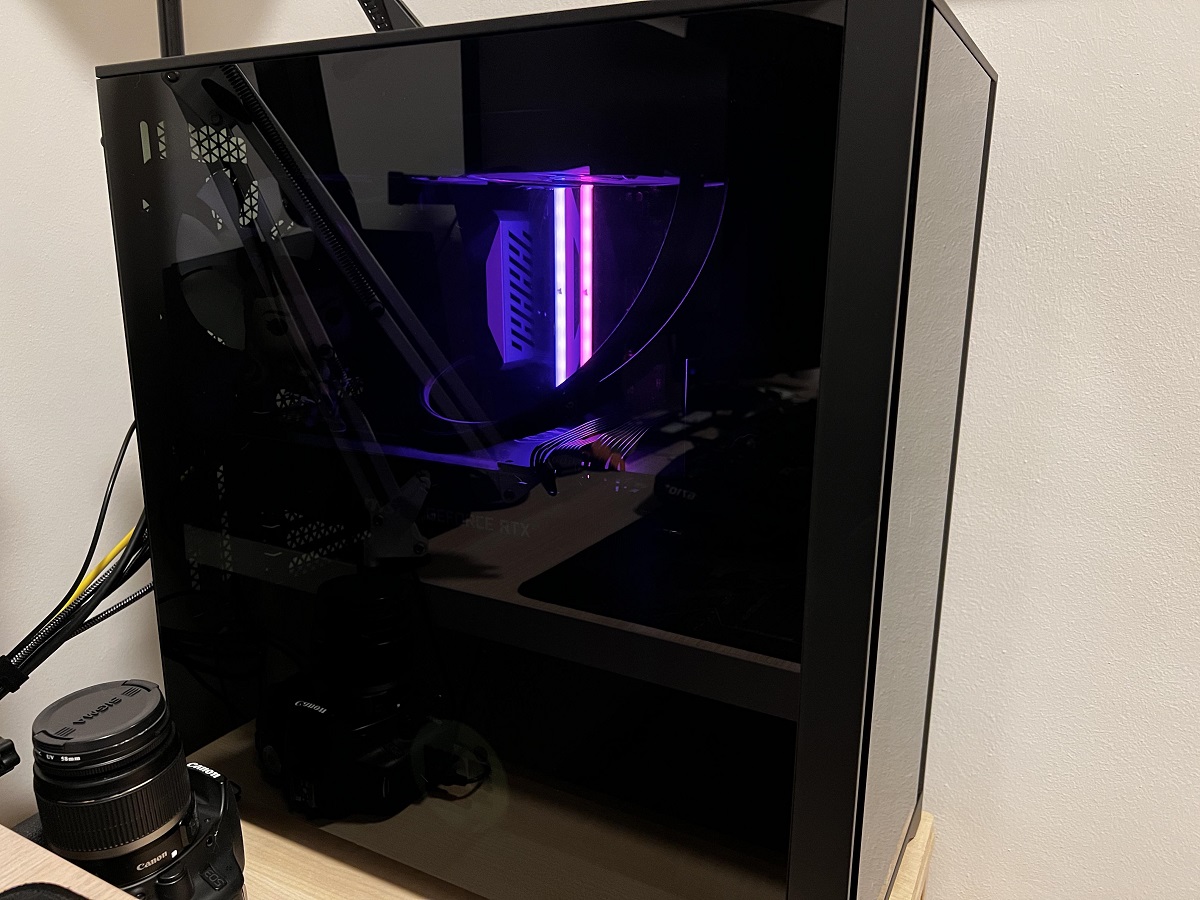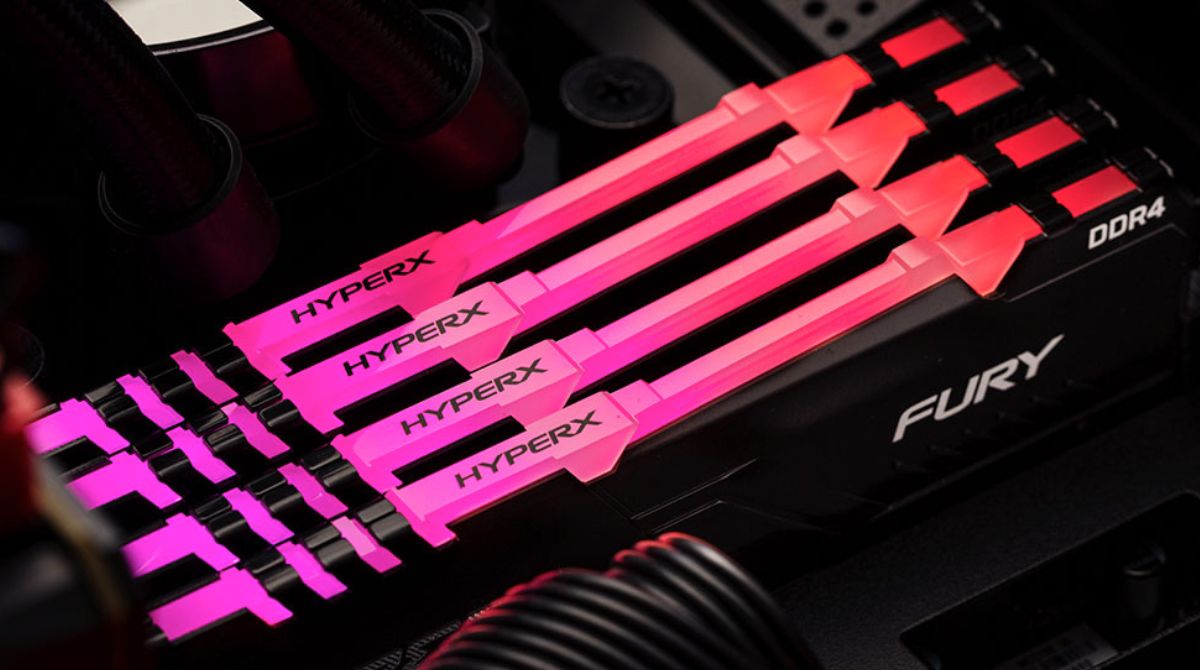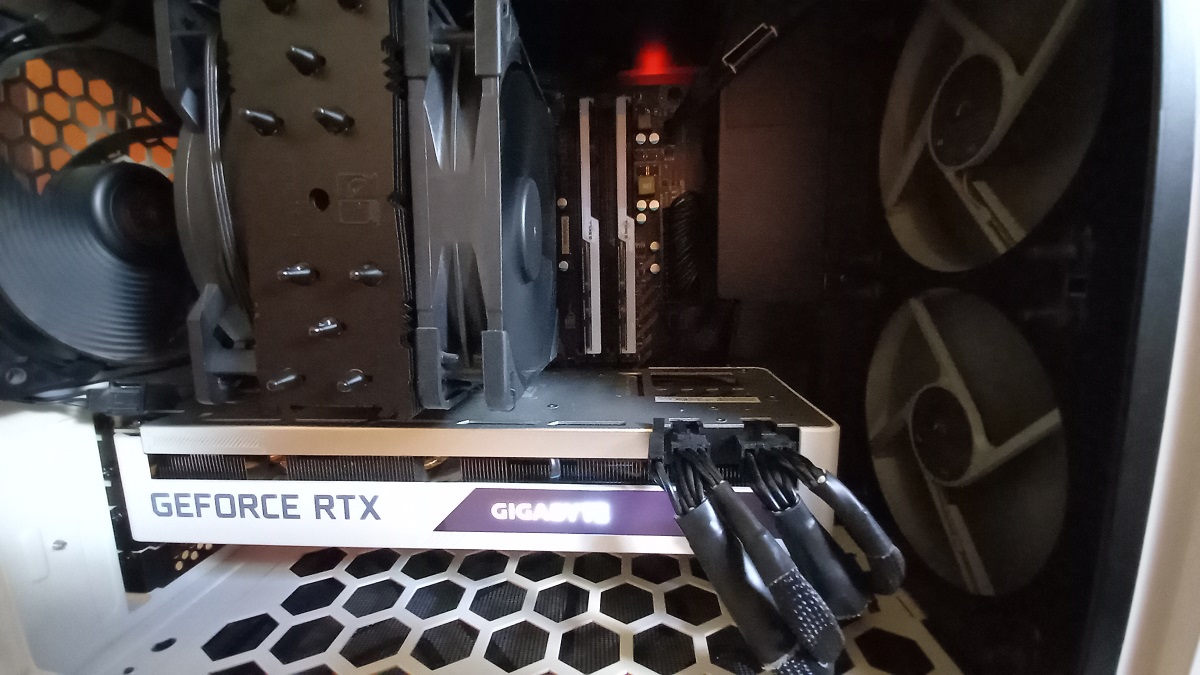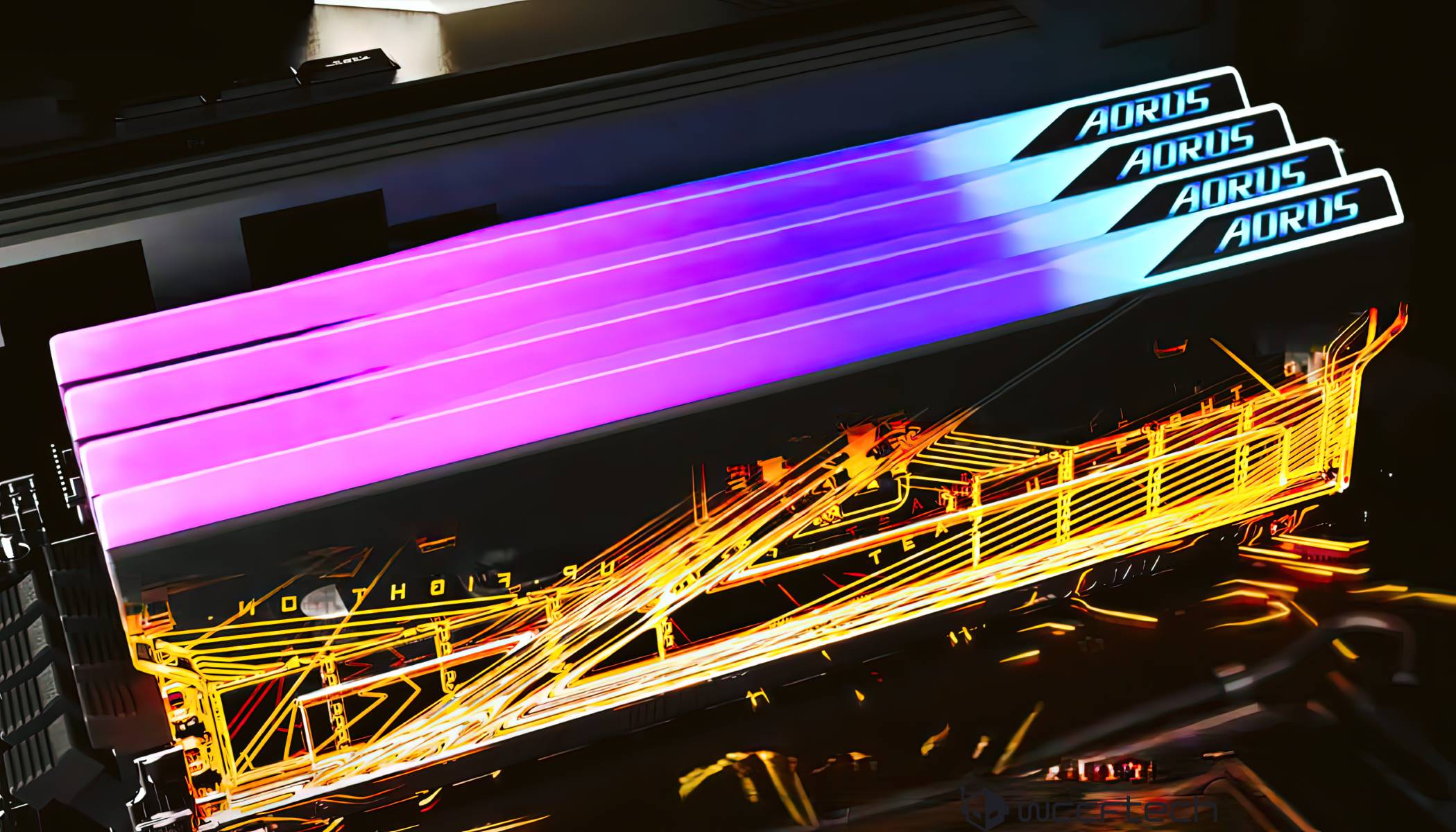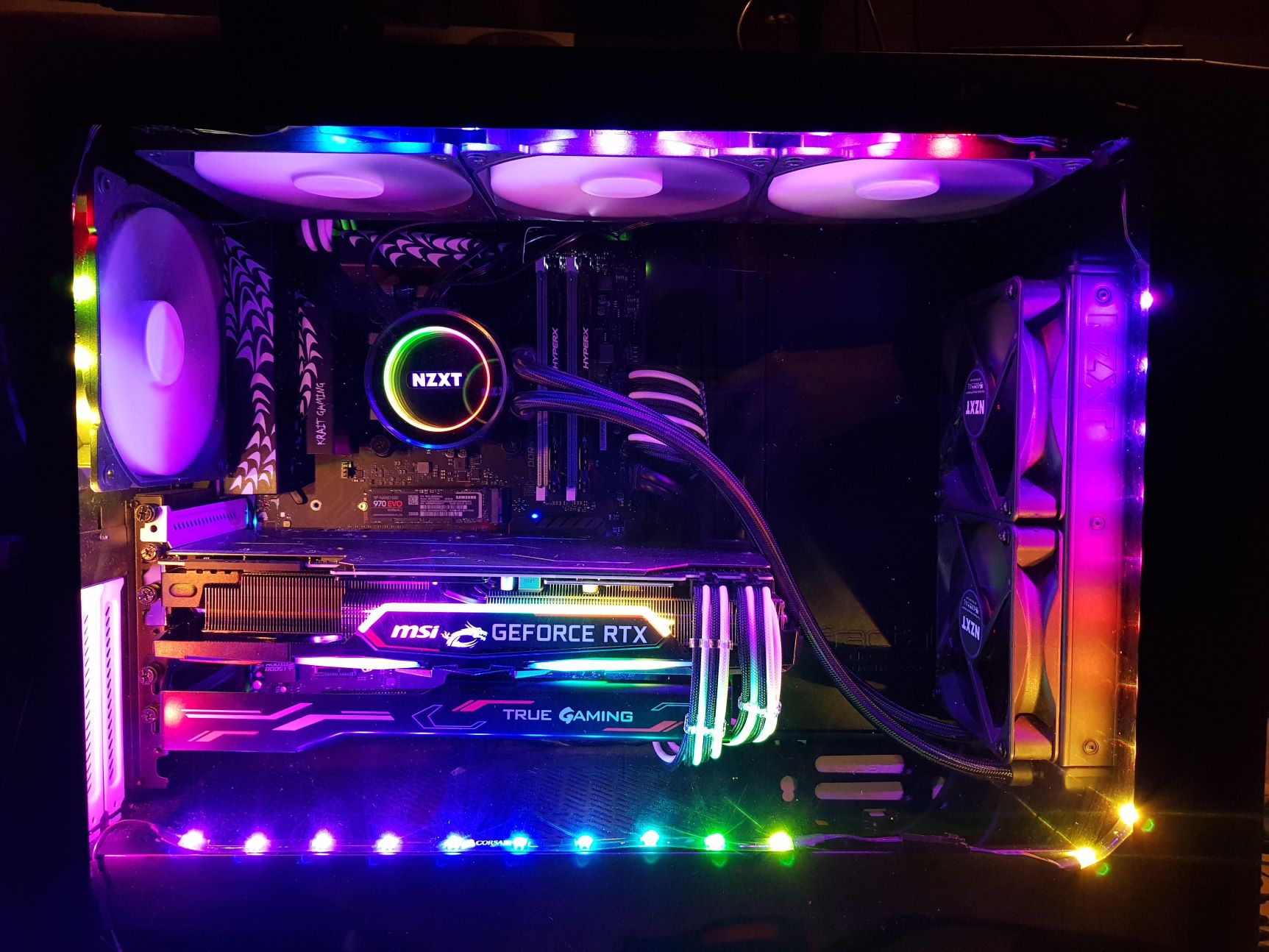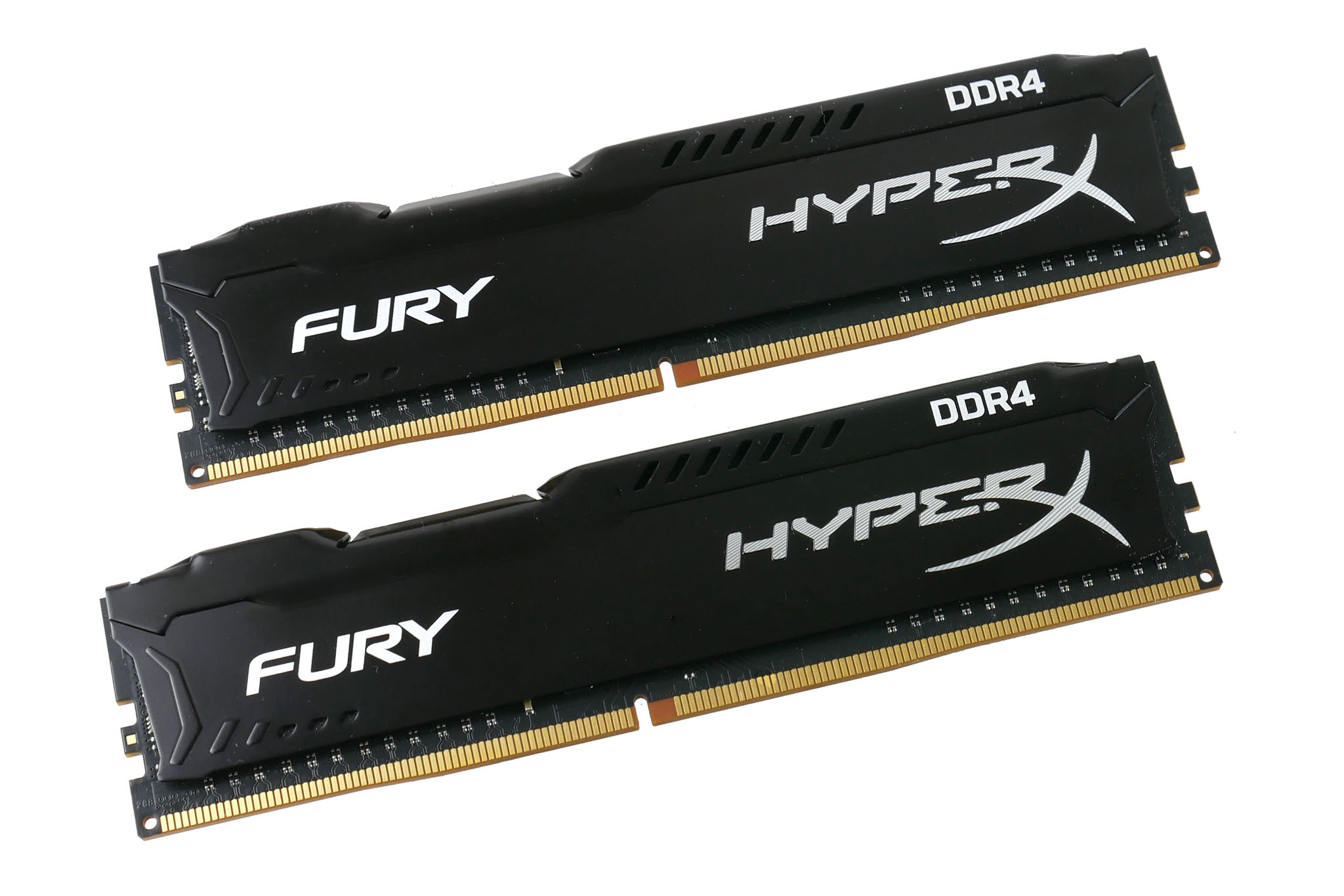Introduction
Welcome to the digital age, where personalization and customization have taken center stage. From RGB keyboards to RGB RAM, PC enthusiasts are now able to add a touch of vibrant and dynamic lighting to their computer setups. However, what happens when your RGB RAM fails to light up as expected? Before you start to panic, it’s important to understand that there can be several reasons behind this issue.
RGB RAM, or memory modules that feature RGB lighting, have become increasingly popular due to their ability to add a visually appealing element to any PC build. The colorful lights can create stunning effects and enhance the overall aesthetics. But what do you do when your RGB RAM doesn’t light up, leaving your setup looking dull and uninspiring?
In this article, we will explore the most common reasons why your RGB RAM may not be lighting up and provide troubleshooting steps to help you resolve the issue. From installation errors to compatibility problems, there are various factors that could be preventing your RGB RAM from illuminating as it should.
By understanding these potential issues and following the steps to troubleshoot them, you can regain the brilliance of your RGB RAM and enjoy the full experience of a personalized computer setup. So, let’s dive into the possible causes and solutions for your RGB RAM lighting issues.
Common reasons why RGB RAM is not lighting up
There can be several common reasons why your RGB RAM fails to light up, ranging from installation errors to compatibility issues and software problems. Let’s take a closer look at some of these possible causes:
- Incorrect installation: One of the most common reasons for RGB RAM not lighting up is improper installation. It’s crucial to ensure that the memory modules are correctly seated in the RAM slots and that all connections are secure.
- Compatibility issues: RGB RAM modules often require specific motherboard compatibility, and using incompatible components can cause the lighting to malfunction. It’s essential to check if your motherboard supports RGB RAM and if any specific configurations are required.
- Software or firmware problems: Sometimes, issues with software or firmware can prevent RGB RAM from lighting up. Outdated drivers or incomplete installations of RGB software can interfere with proper functionality. Updating the necessary software and firmware can often resolve these problems.
- Power supply issues: Insufficient power supply can also be a potential cause. RGB RAM requires power to illuminate, and if your power supply unit is not providing enough power or if the connections are faulty, the lights may not turn on.
- Faulty RGB RAM modules: Unfortunately, there is also the possibility that the RGB RAM modules themselves are faulty. This can occur due to manufacturing defects or damage during handling. In such cases, replacement may be necessary.
These are just a few examples of the common issues that can prevent your RGB RAM from lighting up properly. It’s important to identify the specific cause in your case, as the troubleshooting steps may vary depending on the root problem. In the following sections, we will explore the steps you can take to fix RGB RAM lighting issues and bring back the dazzling glow to your computer setup.
Incorrect installation
Improper installation is one of the most common reasons why your RGB RAM may not be lighting up. It’s essential to ensure that the modules are correctly seated in the RAM slots and that all connections are secure. Here are some factors to consider when it comes to installation:
- Check the orientation: Make sure you align the notch on the RAM module with the corresponding key on the RAM slot. Insert the RAM module into the slot at a slight angle and then press it down firmly until it clicks into place.
- Verify compatibility: Ensure that the RGB RAM modules you have chosen are compatible with your motherboard. Check the manufacturer’s specifications and guidelines to determine if any specific configurations are required.
- Secure connections: Double-check all the connections, including the power cables and any RGB headers on the motherboard. Loose connections can prevent the RGB RAM from receiving power and thus, fail to light up. Ensure that all connections are snug and secure.
It’s worth noting that different motherboards and RAM models may have slightly different installation procedures, so consult the respective manuals for detailed instructions. Additionally, you may consider reseating the RAM modules if you suspect that they weren’t properly installed initially.
Once you have confirmed that the modules are correctly installed, power on your system and check if the RGB RAM lights up. If the issue persists, it’s time to move on to other troubleshooting steps to determine the underlying cause.
Compatibility issues
When it comes to RGB RAM, compatibility is a crucial factor that can affect the lighting functionality. It’s important to ensure that your motherboard and RGB RAM modules are compatible with each other. Here are some considerations regarding compatibility:
- Check motherboard compatibility: Review your motherboard’s specifications and documentation to determine if it supports RGB RAM. Look for any specific requirements or limitations mentioned by the manufacturer.
- Verify RGB header support: RGB RAM modules typically require connection to a motherboard’s RGB headers to receive power and control the lighting. Ensure that your motherboard has the necessary RGB headers or connectors compatible with your RGB RAM modules.
- Consider software compatibility: Some RGB RAM modules may require specific software to control and customize the lighting effects. Check if your motherboard’s software ecosystem supports the RGB RAM modules you have installed.
- Consult manufacturer resources: If you are unsure about compatibility, reach out to the motherboard and RGB RAM module manufacturer for support. They can provide guidance and assistance in determining compatibility and resolving any issues.
Keep in mind that not all motherboards or RAM modules are created equal, and compatibility requirements can vary. It’s important to do thorough research and confirm compatibility before purchasing RGB RAM modules. If compatibility issues are identified as the cause of your RGB RAM not lighting up, you may need to explore alternative options, such as replacing the RAM modules or upgrading your motherboard.
Next, we will discuss troubleshooting steps related to software and firmware that can help you resolve RGB RAM lighting issues.
Software or firmware problems
Software or firmware problems can also prevent your RGB RAM from lighting up correctly. Outdated drivers, incomplete software installations, or conflicts with other RGB control software can interfere with the proper functioning of the lighting effects. Here are some steps you can take to address these issues:
- Update drivers and firmware: Check the manufacturer’s website for the latest drivers and firmware updates for your motherboard and RGB RAM modules. Download and install the updates to ensure compatibility and resolve any known software-related issues.
- Reinstall RGB control software: If you have already installed RGB control software, consider uninstalling and reinstalling it to ensure a clean installation. This can help resolve any conflicts or corrupted files that may be causing issues.
- Check for software conflicts: Verify that there are no conflicts between multiple RGB control software installed on your system. These conflicts can lead to the RGB RAM not lighting up or functioning properly. Uninstall any unnecessary or conflicting RGB control software.
- Restart your system: Sometimes, a simple system restart can fix software or firmware-related issues. After updating drivers, reinstalling software, or making any other changes, restart your computer and check if the RGB RAM lights up as expected.
If the software or firmware problems were causing the issue, these troubleshooting steps should resolve it. However, if the RGB RAM still doesn’t light up, it’s time to explore other potential causes, such as power supply issues.
Power supply issues
Insufficient power supply or faulty connections can also contribute to RGB RAM not lighting up properly. RGB RAM modules require power to illuminate, and if this power supply is compromised, the lights may not turn on. Here are some steps to address power supply-related issues:
- Check power supply capacity: Ensure that your power supply unit (PSU) has enough wattage to support the overall power requirements of your system, including the RGB RAM modules. Insufficient power supply can prevent the RGB RAM from receiving adequate power to light up. Consider upgrading your PSU if necessary.
- Verify power supply connections: Check the connections between your PSU and the RGB RAM modules. Ensure that all cables are securely connected, and there are no loose or damaged connections. A loose or faulty power connection can prevent the RGB RAM from receiving power.
- Consider using dedicated power cables: Some RGB RAM modules may require dedicated power cables that connect directly to the PSU. Consult the manufacturer’s documentation to determine if this is necessary for your specific module. Ensure that these cables are properly connected and providing power to your RGB RAM.
- Test with a different power supply: If you suspect a faulty PSU, consider testing your system with a different power supply unit to see if the RGB RAM lights up. This can help identify if the issue lies with the PSU or if it’s related to other factors.
By ensuring a proper power supply and verifying the connections, you can eliminate power-related issues that may be causing your RGB RAM not to illuminate. If the problem persists, continue troubleshooting using the next steps to identify any potential hardware-related causes.
Faulty RGB RAM modules
While it may not be the most common reason, faulty RGB RAM modules can also be a culprit behind the lighting issues. Manufacturing defects or damage during handling can cause the RGB RAM to malfunction and fail to light up. Here are some steps to consider for diagnosing and addressing faulty RGB RAM modules:
- Test with different RAM slots: Try installing the RGB RAM modules in different RAM slots on your motherboard. This can help determine if the issue is specific to a particular slot or if it’s related to the RAM modules themselves.
- Try different RAM module configurations: If your motherboard has multiple RAM slots, try different combinations of RAM modules. This will help identify if one or more specific modules are causing the lighting issues. Swap positions or remove individual modules to narrow down the problematic one.
- Inspect for physical damage: Carefully examine the RGB RAM modules for any signs of physical damage, such as bent pins, cracks, or loose components. Any visible damage could indicate a faulty module that may need to be replaced.
- Contact manufacturer support: If you suspect that the RGB RAM modules are faulty, it’s best to reach out to the manufacturer’s support team. They can provide guidance on troubleshooting steps specific to their products and assist with any warranty claims or replacements if necessary.
Remember to handle the RGB RAM modules with care during this process, as improper handling or installation can cause further damage. By testing different configurations and seeking assistance from the manufacturer, you can determine if faulty RGB RAM modules are the root cause of the lighting issues.
Troubleshooting steps to fix RGB RAM lighting issues
Now that we have discussed the common reasons behind RGB RAM not lighting up, let’s explore the troubleshooting steps you can take to resolve the issue. These steps encompass a comprehensive approach to identify and fix the underlying problem. Follow these steps in order, testing for RGB RAM lighting after each one:
- Double-check the installation: Ensure that the RGB RAM modules are properly installed in the RAM slots and that all connections are secure.
- Update drivers and firmware: Download and install the latest drivers and firmware updates for your motherboard and RGB RAM modules.
- Check for software conflicts: Verify that there are no conflicts between multiple RGB control software installed on your system. Uninstall any unnecessary or conflicting software.
- Verify power supply connections: Check and secure the power supply connections to the RGB RAM modules, ensuring that they are properly connected and receiving adequate power.
- Test RAM slots and try different configurations: Install the RGB RAM modules in different RAM slots or try different combinations to identify potential slot or module-specific issues.
- Contact manufacturer support or seek professional help: If none of the above steps resolve the issue, reach out to the manufacturer’s support team for assistance. They can provide further troubleshooting steps or initiate the process of warranty claims and replacements if necessary.
It is important to go through each step methodically, testing the RGB RAM lighting after each action, to isolate the root cause and determine the most effective solution. Remember to consult the documentation provided by the motherboard and RGB RAM module manufacturers for specific instructions and recommendations.
By following these troubleshooting steps, you can increase the chances of resolving the RGB RAM lighting issues and restore the vibrant illumination to your computer setup.
Double-check the installation
One of the first troubleshooting steps to take when your RGB RAM is not lighting up is to double-check the installation. Incorrect installation can prevent the RGB RAM modules from receiving power and result in the lighting not functioning properly. Here are some factors to consider:
- Check alignment and seating: Ensure that the RGB RAM modules are correctly aligned with the RAM slots on your motherboard. The notch on the RAM module should align with the corresponding key on the RAM slot. Insert the module at a slight angle and press it down firmly until it clicks into place.
- Verify proper connections: Make sure that all power connections are securely attached. RGB RAM modules often require additional power connections through cables, so ensure that they are properly plugged in. Verify that any RGB headers or connectors on the motherboard are connected to the RGB RAM modules.
- Confirm compatibility: Check the compatibility between your RGB RAM modules and your motherboard. Consult the documentation provided by the manufacturers to ensure that the modules are supported and any specific configurations are followed.
It’s worth noting that installation procedures may vary slightly depending on the motherboard and RAM model. Always refer to the respective manuals for detailed instructions specific to your components.
After double-checking the installation, power on your system and verify if the RGB RAM lights up as expected. If the issue persists, move on to the next troubleshooting steps to diagnose other potential causes.
Update drivers and firmware
Outdated drivers and firmware can lead to compatibility issues and prevent your RGB RAM from lighting up properly. Updating these components can often resolve software-related problems and ensure optimal functionality. Here’s what you can do:
- Check for updates: Visit the manufacturer’s website for your motherboard and RGB RAM modules to check for the latest driver and firmware updates. Look for any specifically related to RGB lighting or general system compatibility.
- Download and install updates: Download the latest drivers and firmware updates from the manufacturer’s website. Follow the provided instructions for installation. Pay attention to any special guidelines or prerequisites mentioned.
- Ensure complete installation: After updating, verify that the installation was successful. Check for any error messages or prompts that may indicate incomplete installation. Restart your system if necessary, as some updates require a system reboot to take effect.
Keep in mind that different motherboard manufacturers may have their own software ecosystems for managing RGB lighting control. Make sure to update both the RGB software and any related system software provided by the manufacturer.
After updating the drivers and firmware, power on your system and check if the RGB RAM lights up correctly. If the issue persists, proceed to the next troubleshooting steps to narrow down the problem further.
Check for software conflicts
Software conflicts can disrupt the proper functioning of RGB lighting and prevent your RGB RAM from lighting up as expected. Conflicts between different RGB control software or incompatible versions can cause issues. Here’s how you can address software conflicts:
- Identify RGB control software: Determine the RGB control software that you are using to control your RGB RAM lighting. Common software includes manufacturer-specific applications, such as ASUS Aura Sync, Gigabyte RGB Fusion, or Corsair iCUE.
- Uninstall unnecessary software: If you have multiple RGB control software installed on your system, consider uninstalling any unnecessary ones. Having too many RGB control software applications can lead to conflicts and affect the lighting functionality. Remove any conflicting or redundant software.
- Check for updates: Ensure that you have the latest version of your RGB control software installed. Visit the manufacturer’s website to download and install any available updates. Updates often include bug fixes and compatibility improvements that can resolve conflicts.
- Restart your system: After making any changes or updates to the RGB software, restart your system. This can help ensure that the changes are applied correctly and that any conflicts are resolved.
By checking for software conflicts and ensuring that you are using the latest version of your RGB control software, you can address any potential compatibility issues and improve the functionality of your RGB RAM lighting. If the RGB RAM is still not lighting up, continue to the next troubleshooting steps to investigate other possible causes.
Verify power supply connections
Proper power supply connections are crucial for the RGB RAM modules to receive the necessary power and illuminate. If the power supply connections are incorrect or loose, it can result in your RGB RAM not lighting up. Here are the steps to verify the power supply connections:
- Check the RGB RAM power cables: RGB RAM modules often require additional power connections through cables. Ensure that these cables are securely plugged into the RGB RAM modules and the respective power source. Verify that there are no loose or disconnected cables.
- Examine the RGB headers: Some motherboards have dedicated RGB headers that provide power to the RGB RAM modules. Confirm that the RGB headers are properly connected and aligned with the RGB RAM modules. Make sure there are no bent or damaged pins within the headers.
- Confirm sufficient power supply: RGB RAM modules consume power, and if your power supply unit (PSU) does not meet their power requirements, the lighting may not function properly. Ensure that your PSU has enough wattage to support all the components in your system, including the RGB RAM modules.
- Double-check power supply connections: Assess all the power supply connections in your system, including connections to the motherboard and any other components. Verify that everything is tightly connected and secured.
After verifying the power supply connections, power on your system and check if the RGB RAM lights up. If the RGB RAM still fails to illuminate, proceed to the next troubleshooting steps to further investigate the issue.
Test RAM slots and try different configurations
If your RGB RAM is still not lighting up, it’s worth considering the possibility of faulty RAM slots or specific module configurations causing the issue. Testing different RAM slots and configurations can help identify whether the problem lies with a particular slot or module. Follow these steps to troubleshoot further:
- Test different RAM slots: Remove the RGB RAM modules from their current slots and install them in different RAM slots on your motherboard. This will help determine if a specific slot is causing the lighting issues. Note any changes in the behavior of the RGB RAM.
- Try different RAM module combinations: If your motherboard has multiple RAM slots, try different combinations of RGB RAM modules. For example, if you have four modules, try installing them in pairs or individually to isolate any specific module issues. This will narrow down the problem further.
- Inspect RAM slots: While the RGB RAM modules are removed, visually inspect the RAM slots for any signs of damage or debris. Clean the slots if necessary using compressed air or a soft brush. Ensure that there are no bent pins or foreign objects obstructing the connections.
As you test different RAM slots and configurations, monitor whether the RGB RAM lights up in any specific scenario. This experimentation will help pinpoint the cause of the issue, whether it’s a faulty RAM slot or a problematic module.
If none of the configurations result in the RGB RAM lighting up properly, proceed to the next troubleshooting steps or consider seeking professional help from the manufacturer’s support team or a computer technician.
Contact manufacturer support or seek professional help
If you have gone through all the previous troubleshooting steps and your RGB RAM is still not lighting up, it may be time to reach out to the manufacturer’s support team or seek help from a professional technician. Here’s what you can do:
- Contact manufacturer support: Reach out to the manufacturer of your RGB RAM modules and motherboard for assistance. They have specific knowledge about their products and can provide further troubleshooting steps based on your system’s configuration and any known issues.
- Provide detailed information: When contacting the support team, be sure to provide them with all the relevant details regarding your RGB RAM, motherboard, and any troubleshooting steps you have already taken. This will help them understand the situation better and provide more accurate guidance.
- Consider warranty claims: If your RGB RAM modules are still under warranty and all troubleshooting steps indicate a hardware issue, you may be eligible for a replacement. Discuss the warranty options with the manufacturer’s support team and follow their instructions for initiating a claim.
- Consult a professional technician: If you prefer hands-on assistance or if the manufacturer’s support team is unable to resolve the issue remotely, consider seeking help from a professional computer technician. They can further diagnose the problem and provide suitable solutions or hardware repairs.
Keep in mind that manufacturer support and professional assistance may vary depending on your location and individual circumstances. Be patient and follow the instructions provided by the support team or technician to resolve the RGB RAM lighting issues effectively.
Remember to save any relevant communication, such as support tickets or repair receipts, for future reference. This documentation may be necessary if you need to reference the issue later or if you require further assistance.
Conclusion
The RGB RAM lighting not working as intended can be a frustrating experience, but by following the troubleshooting steps outlined in this article, you can identify and resolve the underlying issues. From double-checking the installation and updating drivers to checking for software conflicts and verifying power supply connections, these steps cover a range of potential causes. Testing different RAM slots and configurations can further narrow down the problem, and if necessary, reaching out to manufacturer support or seeking professional help can provide additional guidance and solutions.
Remember that each computer setup is unique, and the exact cause of the RGB RAM lighting issue may vary. It is important to approach the troubleshooting process systematically and have patience in identifying the problem. Documentation and communication with the manufacturer’s support team or professional technicians can be valuable for resolving the issue effectively.
By following these steps and seeking appropriate assistance when needed, you can increase the chances of resolving RGB RAM lighting issues and restore the vibrant illumination that adds personality and aesthetics to your computer setup.







